কালো টাকায় ভারত বিশ্বে অষ্টম
১৮ডিসেম্বর,NTWEB: ২০০১ থেকে ২০১০। এই দশ বছরে ১২৩ বিলিয়ন ডলার বা ৬ লক্ষ ১৫ হাজার কোটি কালো টাকা হিসেবে দেশের বাইরে বেরিয়ে গিয়েছে। গ্লোবাল ফিনান্সিয়াল ইন্টেগ্রিটি বা জিএফআই নামে একটি মার্কিন সংস্থার এই চাঞ্চল্যকর রিপোর্ট সামনে আসার পর কপালে ভাঁজ পড়েছে ভারতীয় প্রশাসনের। অবৈধ উপায়ে টাকা দেশের বাইরে চলে যাওয়ার তালিকায় ভারতের স্থান বিশ্বে অষ্টম। এই তালিকায় শীর্ষে রয়েছে চিন।
আধার কার্ডই এখন বেশি প্রাধান্য পাচ্ছে ভোটার আই-কার্ড থেকে। একটি আধার কার্ড দিয়ে একজন ব্যক্তি পাঁচটি ব্যাঙ্কে তাঁর ব্যাঙ্ক অ্যাকাউন্ট খুলতে পারবেন। আধার কার্ড দিয়ে যে সমস্ত ব্যাঙ্কে অ্যাকাউন্ট খোলা যাবে তা হল স্টেট ব্যাঙ্ক অফ ইন্ডিয়া, এইচডিএফসি ব্যাঙ্ক, আইসিআইসিআই ব্যাঙ্ক, অ্যাক্সিস ব্যাঙ্ক ও ইন্ডিয়ান ওভারসিজ ব্যাঙ্ক। নয়াদিল্লিতে 'সরল মানি' প্রকল্পের উদ্বোধনে এ কথা ঘোষণা করা হয়েছে। প্রকল্পের উদ্বোধনে অ্যাক্সিস ব্যাঙ্কের ম্যানেজিং ডিরেক্টর ও সিইও শিখা শর্মা বলেছেন, 'আধার কেন্দ্রিক কেওয়াইসি-র মাধ্যমে যে পরিষেবা আমরা দিচ্ছি তাতে অ্যাকাউন্টের খরচ অনেক কম হবে এবং এটি আরও আকর্ষণীয় হবে।'
তবে শুধু ব্যাঙ্ক নয়, এই পাঁচটি ব্যাঙ্কের বিজনেস করেসপন্ডেন্ট আউটলেটেও একই সঙ্গে পরিচয়পত্র ও ঠিকানার প্রমাণ হিসাবে আধার কার্ড গ্রাহ্য হবে। এছাড়াও গ্রাহকদের জন্য রয়েছে আরও সুযোগসুবিধা। 'সরল মানি' অ্যাকাউন্টে যে ভিসা-পেমেন্ট সেটেলমেন্ট রয়েছে তাতে গ্রাহকরা কেনাকাটা করতে পারবেন, টাকা পাঠাতে ও কারুর পাঠানো টাকা গ্রহণ করতে পারবেন এবং এটিএম থেকে টাকা তুলতে পারবেন।
'সরল মানি' প্রকল্প শুধুমাত্র রাজধানী দিল্লিতেই রয়েছে। ইউনিক আইডেন্টিটি অথরিটি অফ ইন্ডিয়া চাইছে ২০১৫ সালের মধ্যে ৬০ কোটি নাগরিককে আধার কার্ডের আওতায় আনা। আগামী বছরের মধ্যে পুরো দেশেই 'সরল মানি' প্রকল্প চালু হয়ে যাবে বলে আশা করা হচ্ছে।
নয়াদিল্লি: স্রেফ আধার কার্ড থাকলেই অ্যাকাউন্ট খোলা যাবে স্টেট ব্যাঙ্ক অফ ইন্ডিয়া, আইসিআইসিআই ব্যাঙ্ক, অ্যাক্সিস ব্যাঙ্ক, এইচডিএফসি ব্যাঙ্ক ও ইন্ডিয়ান ওভারসিজ ব্যাঙ্কে৷ বুধবার নয়াদিল্লিতে সরল মানি প্রকল্পের উদ্বোধনে এ কথা ঘোষণা করা হয়েছে৷
আধার কার্ডে যে ঠিকানা রয়েছে যদি সেই ঠিকানাতেই কেউ ব্যাঙ্ক অ্যকাউন্ট খুলতে চান তা হলে আধার 'লেটার'কে একই সঙ্গে পরিচয়পত্র ও ঠিকানার প্রমাণপত্র হিসাবে গণ্য করতে সব ব্যাঙ্কে নির্দেশ পাঠিয়েছে ভারতীয় রিজার্ভ ব্যাঙ্ক৷
সরল মানি প্রকল্পের উদ্বোধনে অ্যাক্সিস ব্যাঙ্কের ম্যানেজিং ডিরেক্টর ও সিইও শিখা শর্মা বলেছেন, 'আধার-কেন্দ্রিক কেওয়াইসি-র (নো ইওর কাস্টমার) মাধ্যমে যে পরিষেবা আমরা দিচ্ছি তাতে অ্যাকাউন্টের খরচ অনেক কম হবে এবং এটি আরও আকর্ষণীয় হবে৷ এই প্রকল্প নিশ্চিত ভাবেই সামগ্রিক বৃদ্ধির সহায়ক হবে৷' শুধু ব্যাঙ্ক নয়, এই পাঁচটি ব্যাঙ্কের বিজনেস করেসপন্ডেন্ট (বিসি) আউটলেটেও একই সঙ্গে পরিচয়পত্র ও ঠিকানার প্রমাণ হিসাবে আধার কার্ড গ্রাহ্য হবে৷ সরল মানি অ্যাকাউন্টে যে ভিসা পেমেন্ট সেটলমেন্ট রয়েছে তাতে গ্রাহক কেনাকাটা করতে পারবেন, টাকা পাঠাতে ও গ্রহণ করতে পারবেন এবং এটিএম থেকে টাকাও তুলতে পারবেন৷
এই মুহূর্তে ২১ কোটি আধার গ্রাহকই প্রকল্পের লক্ষ্য৷ ইউনিক আইডেন্টিটি অথরিটি অফ ইন্ডিয়া (উদাই) চায় ২০১৫ সালের মধ্যে ৬০ কোটি নাগরিককে আধারের আওতায় আনা৷
সরল মানি আপাতত রাজধানী দিল্লিতেই শুদু হচ্ছে৷ আগামী বছরের শেষের দিকে পুরো দেশেই প্রকল্প চালু হয়ে যাবে বলে আশা৷ উদাই-এর চেয়ারম্যার নন্দন নিলেকানি বলেছেন, 'এই প্রকল্প শুধু আর্থক ভাবে পিছিয়ে থাকাদের ব্যাঙ্ক ব্যবস্থায় ঢুকতেই সাহায্য করবে না, আধার কার্ডের সামগ্রিক প্রয়োগের পথও খুলে দেবে৷
ভিসা গ্রুপের কান্ট্রি ম্যানেজার অফ ইন্ডিয়া অ্যান্ড সাউথ এশিয়া উত্তম নায়ক বলেছেন ভারতের যে অংশের মানুষ আর্থিক ভাবে পিছিয়ে রয়েছেন তাঁদের ভর্তুকি দেওয়া, বৃত্তি দেওয়ার মতো বিষয়ে এই প্রকল্প সহায়তা করবে৷
The Employees Provident Fund has followed up on its attack on bulk payments of provident fund by companies by demanding UID details for all new PF accounts.
An order issued by the new Central PF commissioner Anil Swaroop has made it compulsory for all new members opening a PF account to provide Aadhaar details as their identification criterion.
The circular says that a deadline for other members to provide their UID details would also be issued soon.
"UID linkage would ensure that money meant for workers actually reaches the worker, even if he is a casual worker who has worked in a place only for a few days," Swaroop said.
The previous Commissioner R C Mishra had before his retirement issued a circular to end payment of PF funds in an arbitrary manner by employers.
In a circular in November last year, the EPFO had openly admitted that the organisation has been accepting bulk PF payments of workers from companies, that is payments of workers that were bundled together and hence not specifically linked to a particular worker. These funds were decided arbitrarily on the basis of negotiations between the EPFO officials and employers, according to top EPFO officials.
The order had condemned this practice and had asked for making payments against specific individual accounts only.
Swaroop's order takes this one step forward by asking for UID linkage to each account.
The circular has asked all the new members of the EPFO to provide their Aadhaar details. The employer will be responsible for providing Aadhar card details of new members. Aadhar would now function as the main identification criterion for workers, the circular indicated.
The circular directs all the regional offices to contact their local UIDAI officials to request for setting up of Aadhaar enrollment camps. According to the circular, members joining the EPFO on or after 1st March 2013 will be required to provide their Aadhaar number.
The circular also directs that Aadhaar details of the present members should be collected by 30th June 2013. The central government has already taken the decision to link provident fund, pension scheme and other benefits covered by EPFO with the direct cash transfer scheme.
Under this Aadhaar number will be necessary to take out PF and pension money. The Aadhaar number has been made optional for the present members but can later be made mandatory in future, the circular said.
-
UIDAI
uidai.gov.in/... www.uidai.gov.in is the ONLY official website of the Unique Identification Authority of India (UIDAI) and no other websites using the term UIDAI/Aadhaar/UID or ...
You've visited this page 3 times. Last visit: 23/9/10 -
Aadhar Card - uidnumber.org | AADHAR Card, Status, Online ...
uidnumber.org/Aadhaar is a 12-digit unique identification (UID) number which the Unique Identification Authority of India (UIDAI) is issuing for all Indian residents. The UID ...
How to Get UID Card Online? - Register for Aadhaar Card to get ...
www.myuidcard.com/4 days ago – We are aware and know our govt. policies and recommends not to useUID card data as proof or reference in legal proceeding. The law of UID ...
Unique Identification Authority of India - Wikipedia, the free ...
"The UID scheme has been conceptualized with no clarity of purpose and leaving many things to be sorted out during the course of its implementation; and is ...
You've visited this page many times. Last visit: 24/1/13-
"Say no to UID campaign" gathers 3.57 crore signatures - Moneylife
Mar 21, 2012 – Despite the Parliamentary Standing Committee on Finance and other civil society groups coming out against the UID scheme, the government ...
UID Not In The Public Interest
Aug 25, 2010 – UID Not In The Public Interest. By Campaign For No UID. 25 August, 2010. Countercurrents.org. Scheme is deeply undemocratic, expensive ...
UIDAI - Home Page
List of certified candidates with EID/UID (shared with UIDAI) ... Under no circumstances, he/she should share/mention e-mail ID to/ of any other person. In case a ...
aadhaar - uid cards - Welcome to Chennai Post
Dec 24, 2012 – The purpose of the UIDAI is to issue a unique identification number(UID) to all Indian residents that is (a) robust enough to eliminate duplicate ...
Aadhaar, Aadhar card status, aadhar card online, Unique ID
aadhaaruid.org/Taking a step ahead to gear up the aadhaar project the state government of Andhra Pradesh has decided to have a permanent UiD number enrollment center at ...
কমি যোৱা উপস্থিতিৰ হাৰ ধৰিবৰ বাবে ইউনিক কার্ড — India Development ...
| 11 Feb 2011 08:28:57 PM Friday BdST |
ইউআইডি'কার্ডের সৌজন্যে অস্তিত্ব খুঁজে পাবেন ভারতীয়রা
রক্তিম দাশ. সিনিয়র করেসপন্ডেন্ট
বাংলানিউজটোয়েন্টিফোর.কম
কলকাতা : ভারতের প্রত্যন্ত এক গ্রামের গরীব কৃষক ও তাদের পরিবারের সদস্যরা লাইন দিয়ে দাঁড়িয়ে আছেন। সূর্যের তাপ উপেক্ষা করে তারা দাঁড়িয়েছেন অস্তিত্বের অনুমোদন পাওয়ার জন্য। সরকারি কাউন্টার থেকে মিলছে একটি ফর্ম। ফর্ম পূরন হলে তোলা হচ্ছে ছবি, নেওয়া হচ্ছে আঙুলের ছাপ। গৃহীত যাবতীয় তথ্য কমপিউটারে আপলোড করার কয়েক সপ্তাহ পর পাওয়া যাচ্ছে নম্বরসহ একটি বিশেষ পরিচয় পত্র।
না, এটা কোন গল্প নয়। বাস্তবে সত্যি ঘটনা। যুক্তরাষ্ট্রের ' স্যোশাল সিকিউরিটি নাম্বার'-এর আদলে ভারতের প্রতিটি নাগরিককে ইউনিক আইডেন্টিটি নাম্বার দেওয়ার সিদ্ধান্ত নিয়েছে ভারত সরকার।
সাবে ইউফোসিস আধিকারিক নন্দন নিলেকোনির নেতৃত্বে গঠন করা হয়েছে কমিটি -ইউনিক আইডেন্টিফিকেশান অথরিটি অফ ইন্ডিয়া। শেষ হয়েছে প্রাথমিক পর্যায়ের কাজ। কমিটির তরফে বলা হয়েছে, ' এই কার্ডটি যুক্তরাষ্ট্রের তুলনায় অনেক বেশী সুরক্ষিত। কেননা প্রতিটি নম্বরের সঙ্গে যুক্ত থাকবে একটি বায়োমেট্রিক মার্কার বা কমপিউটারের ব্যবহারের উপযোগী জৈবতথ্য, যেমন আঙুলের ছাপ বা চোখের মনির পরীক্ষা।'
প্রকল্পের প্রধান নন্দন নিলেকোনি জানিয়েছেন, ভারত এমন একটি দেশ যেখানে অনেকের কাছেই উপযুক্ত তথ্যপঞ্জী নেই। বহু মানুষ নিজের জন্ম তারিখ, এমনকী পদবীও ঠিকমতো বলতে পারে না। সেখানে এই উদ্যোগ সাধারণ মানুষের কাছে ফলপ্রদ হবে। এর ফলে ব্যবসা - বাণিজ্যের নতুন দিগন্ত খুলে যাবে।
জানা গেছে, এখন পর্যন্ত এ বিষয়ে তিনটি বেসরকারি প্রতিষ্ঠানকে এই দায়িত্ব দেওয়া হয়েছে। তথ্য যাতে নকল না হয় তার জন্য বারে বারে যাচাই করার নির্দেশ দেওয়া হয়েছে। গত বছর অক্টোবর মাস থেকে দশ লাখ মানুষ এই কার্ড পাওয়ার জন্য নাম নথীভুক্ত করেছেন। প্রতিদিনই বহু মানুষ এ বিষয়ে জানতে আসছেন সরকারি দফতরগুলিতে। ক্রমেই বৃদ্ধি পাচ্ছে এর জনপ্রিয়তা।
বাংলাদেশ সময়: ২০২০ ঘন্টা, ফেব্রুয়ারি, ১১ ২০১১
তোমাকেই খুঁজছে ডিজিটাল রাষ্ট্র
UID to replace EPF account number
Among many other things, UID (Unique Identification) is going to be useful in tracking and transfering EPF (Employee Provident Fund) Accounts. The Employees' Provident Fund Organisation (EPFO) plans to replace the provident fund (PF) account number with a unique identification (UID) number. It will enable speedy transfer of subscribers' funds in case of a job change and also allow them to track their accounts online. The EPF accounts will be completely online in not so distant future.
At present, if a subscriber changes his job, it takes months to transfer PF money from one account to another, as a transfer of records from one office to the other is required and it's a manual process leading to unforeseen delays.
Under these circumstances, a large number of subscribers often withdraw the entire money in their account and go for a fresh account with the new employer. This step often hampers employees long term retirement planning.
In a pilot study conducted at EPFO's Karnal office, it was found that over 30.2% of subscribers withdraw their PF within a year of joining service while 54.3% do so by the end of the second year. EPFO has a subscribers' base of about 4.7 crore and processes over 60 lakh claims every year. It manages about Rs 3 lakh crore of funds and receives an incremental deposit of over Rs 25,000 crore every year.
"We are in the process of digitizing and inter-connecting all our offices. We plan to use UID as the subscribers account number after that," Labour Secretary P C Chaturvedi said. In the first phase, EPFO has set a target of digitalizing the entire data in its regional and sub-offices by March this year. In the second phase, all offices would be inter-connected. The replacement of PF account number with the UID number will be done after inter-connecting all regional and sub-offices of EPFO by March 2012.
রান্নার গ্যাসের দাম বৃদ্ধির অশনি সংকেত
ডিজিটাল ডেস্ক
কলকাতা, ২৩ নভেম্বর, ২০১১
ভরতুকি উঠে গেলে কলকাতায় রান্নার গ্যাসের সিলিন্ডার পিছু দাম দাঁড়াবে ৬৭৫ টাকা। বর্তমানে এই দাম রয়েছে সিলিন্ডার পিছু ৪০৫ টাকা। ২৭০ টাকা করে ভরতুকি দিচ্ছে কেন্দ্রীয় সরকার। এই ভরতুকির টাকাই ধীরে ধীরে পুরোপুরি তুলে নিতে চাইছে সরকার। এই বিষয়ে চীন, দক্ষিণ কোরিয়া, সিঙ্গাপুরের মডেল ধরে এগোতে চাইছে কেন্দ্র। গত বাজেটে কেন্দ্রীয় অর্থমন্ত্রী প্রণব মুখোপাধ্যায়ের দেওয়া প্রস্তাব অনুসারে রান্নার গ্যাস, কেরোসিন এবং সারের বিপিএল তালিকাভুক্তদের বাদ দিয়ে বাকি অন্য সবার জন্য ভরতুকি তুলে দেওয়ার কথা।
কেন্দ্র চাইছে বিপিএল তালিকাভুক্ত ছাড়া বাকি যে কোনও পরিবারকে বছরে ৬টির বেশি সিলিন্ডার ভরতুকিতে না দিতে। অর্থাৎ বছরে কোনও পরিবার ৬ টি সিলিন্ডার পাবে ভরতুকির দেওয়া দামে। বাকি সিলিন্ডার তাকে কিনতে হবে ভরতুকি ছাড়া ৬৭৫ টাকা দামে। কিন্তু কবে থেকে? উত্তরটা হল, সম্ভবত ২০১৫ সালের আগে পশ্চিমবঙ্গে এই নতুন দাম কার্যকর হওয়ার সম্ভবনা প্রায় নেই। কারণ জোট রাজনীতির বাধ্যবাধকতায় ও শরিকি রাজনীতির চাপে তৃণমূল নেত্রী মমতা বন্দ্যোপাধ্যায়ের কাছে নতিস্বীকার করেছে কেন্দ্রীয় সরকার। মমতা কড়া মনোভাবের জন্যই ২০১৫ সালের আগে গোটা দেশে সিলিন্ডারের দাম একলাফে দেড়গুণ বাড়লেও পশ্চিমবঙ্গে তা আগামী চার বছরের মধ্যে বাড়ার সম্ভাবনা খুবই কম।
সরকারি সূত্রের খবর, গ্যাসের দামে ভরতুকি তুলে দেওয়া সহ বিভিন্ন পরামর্শ দিতে অর্থমন্ত্রকের সুপারিশে একটি টাস্ক ফোর্স গঠিত হয়। বিশিষ্ট টেকনোক্র্যাট নন্দন নিলেকানি এই টাস্ক ফোর্সের প্রধান। গ্যাসের দামে ভরতুকি তুলে দিতে তিনি একটি পাইলট প্রজেক্ট কার্যকর করার পরামর্শ দেন। সেই পরামর্শ কেন্দ্র মেনে নেয়। পাইলট প্রকল্প অনুসারে, ২০১২ সালের মধ্যে হায়দরাবাদ, মহীশূর সহ দক্ষিণের কয়েকটি শহরে ভরতুকি তুলে নিয়ে গ্যাস বিক্রি শুরু করা হবে। ২০১৩ সালে পরের দফায় ওড়িশা, রাজস্থান, তামিলনাড়ু, অসম ও মহারাষ্ট্রে গ্যাসের দামে ভরতুকি তুলে দেওয়া হবে।
নন্দন নিলেকানির নেতৃত্বাধীন এই টাস্ক ফোর্স গোটা দেশে ইউনিক আইডেন্টিটি কার্ড তৈরির দায়িত্বে রয়েছে। পশ্চিমবঙ্গে ইউনিক কার্ড তৈরির কাজ সবে শুরু হয়েছে। এই কার্ডে রেকর্ড থাকবে প্রতিটি পরিবারের মাসিক রোজগারের তথ্য। যার ভিত্তিতে ঠিক হবে সেই পরিবার আদৌ ভরতুকিতে সিলিন্ডার পাওয়ার যোগ্য কিনা। কিন্তু পশ্চিমবঙ্গে এই কার্ড তৈরির কাজ শেষ হতে ২০১৪-১৫ সাল লেগে যাবে। ফলে সিলিন্ডারের ভরতুকিবিহীন নয়া দাম কার্যকর হতে ২০১৫ হয়ে যাবে। কিন্তু বর্তমানে নিয়মিতভাবে ডলারের তুলনায় টাকার দাম পড়েই চলেছে। এর ফলে রাষ্ট্রায়ত্ত তেল কোম্পানীগুলির পেট্রোপণ্য আমদানির খরচা লাফিয়ে লাফিয়ে বাড়ছে। খুব স্বাভাবিকভাবেই আরও এক দফা রান্নার গ্যাসের দাম বাড়ার সিঁদুরে মেঘ উঁকি দিচ্ছে। ফলে ভরতুকি চলাকালীনই সিলিন্ডার পিছু বর্তমান দাম ৪০৫ টাকা ভরতুকিবিহীন আগামী দিনের সম্ভাব্য দাম ৬৭৫ টাকা আগেই ছুঁয়ে ফেলবে না তো? আতঙ্কে রয়েছেন পশ্চিমবঙ্গের গৃহস্থ এবং ব্যবসাদারেরা।
| 'আধার' নিয়ে সমঝোতা চিদম্বরম ও নিলেকানির |
| নিজস্ব সংবাদদাতা • নয়াদিল্লি |
| অভিন্ন পরিচয়পত্র এবং জাতীয় জনসংখ্যা পঞ্জি তৈরির কাজ একই সঙ্গে চলবে। প্রধানমন্ত্রীর হস্তক্ষেপে আপাতত সমঝোতায় পৌঁছলেন পি চিদম্বরম ও নন্দন নিলেকানি। দেশের সমস্ত নাগরিকের জন্য 'ইউনিক আইডেন্টিটি কার্ড' বা অভিন্ন পরিচয়পত্র তৈরির 'স্বপ্নের প্রকল্প' নিয়েছিলেন মনমোহন সিংহ। কর্পোরেট জগৎ থেকে নন্দন নিলেকানির মতো পেশাদারকে নিয়ে এসে সেই প্রকল্পের মাথায় বসিয়েছিলেন তিনি। কিন্তু মনমোহনের অন্য অনেক সংস্কার কর্মসূচির মতোই এই প্রকল্পের ভবিষ্যৎ নিয়েও প্রশ্ন উঠে গিয়েছিল। কারণ, স্বরাষ্ট্র মন্ত্রক ও যোজনা কমিশনের বিরোধিতা। নিলেকানির সংস্থা ঠিকমতো কাগজপত্র যাচাই না করেই পরিচয়পত্র বিলি করায় ভবিষ্যতে দেশের নিরাপত্তার ক্ষেত্রে সমস্যা দেখা দিতে পারে বলে চিদম্বরম আপত্তি তুলেছিলেন। ইউপিএ সরকারের মধ্যে অনেকেই যেমন এ বিষয়ে চিদম্বরমের যুক্তিকে সমর্থন জানিয়েছিলেন, তেমনই প্রধানমন্ত্রী ছাড়াও নিলেকানির পাশে দাঁড়িয়েছিলেন মন্টেক সিংহ অহলুওয়ালিয়া এবং রাহুল গাঁধী। আজ মন্ত্রিসভার বৈঠকে দুই যুযুধান শিবিরকে শেষ পর্যন্ত সমঝোতার রাস্তায় আনতে পেরেছেন মনমোহন। নন্দন নিলেকানির নেতৃত্বাধীন 'ইউনিক আইডেন্টিফিকেশন অথরিটি'-র দায়িত্ব ছিল, অভিন্ন পরিচয়পত্র তৈরি করে সব নাগরিককে একটি নির্দিষ্ট সংখ্যা দিয়ে চিহ্নিত করা। প্রাথমিক ভাবে ২০ কোটি মানুষের জন্য এই আধার-সংখ্যা তৈরির দায়িত্ব দেওয়া হয় নিলেকানিকে। নামধামের পাশাপাশি সকলের 'বায়োমেট্রিক ডাটা' (যেমন আঙুলের ছাপ) নেওয়া হয়। আজ ঠিক হয়েছে, নিলেকানি এপ্রিল মাস থেকে আরও ৪০ কোটি নাগরিকের জন্য আধার-সংখ্যা তৈরির কাজ শুরু করবেন। এ জন্য অতিরিক্ত ৫৭৯২ কোটি টাকা বরাদ্দ হয়েছে। |
| ছবি: পিটিআই |
| চিদম্বরমকে সন্তুষ্ট করতে নিলেকানিও মেনে নিয়েছেন, স্বরাষ্ট্র মন্ত্রকের তরফে নিরাপত্তা সংক্রান্ত যে সব প্রশ্ন তোলা হয়েছে, সেগুলি তিনি দূর করার চেষ্টা করবেন। নিলেকানির তথ্য সংগ্রহের প্রক্রিয়া নিয়ে আপত্তি তুলেছিলেন চিদম্বরম। তাঁর যুক্তি ছিল, এর সঙ্গে দেশের নিরাপত্তার বিষয় জড়িত। স্বরাষ্ট্র মন্ত্রকের অধীন রেজিস্ট্রার জেনারেল এমনিতেই 'জাতীয় জনসংখ্যা পঞ্জি' বা জনগণনার কাজ করছে। নিলেকানির সংস্থা যেখানে এক জন নাগরিক সম্পর্কে পাঁচ রকম তথ্য সংগ্রহ করছে, সেখানে স্বরাষ্ট্র মন্ত্রক এক এক জন নাগরিকের ১৫ রকম তথ্য সংগ্রহ করছে। ফলে একই তথ্য দু'বার সংগ্রহ বা অর্থের অপব্যয়ও হচ্ছে। এই পরিস্থিতিতে তাঁরা যে সমঝোতায় পৌঁছেছেন, তা বোঝাতে আজ মন্ত্রিসভার বৈঠকের পর নিলেকানি-মন্টেককে পাশে নিয়ে সাংবাদিক সম্মেলন করেন চিদম্বরম। তিনি বলেন, "যে ১৬টি রাজ্যে আধার-কর্তৃপক্ষ কাজ শুরু করেছে, তার বাইরে স্বরাষ্ট্র মন্ত্রকই সব তথ্য ও বায়োমেট্রিক ডাটা সংগ্রহ করবে। কিন্তু ওই ১৬টি রাজ্যে ইতিমধ্যেই আধার-কর্তৃপক্ষ যাদের 'বায়োমেট্রিক ডাটা' সংগ্রহ করেছে, তাদের ক্ষেত্রে জাতীয় জনসংখ্যাপঞ্জি তাদের আধার-সংখ্যাটি জেনে নেবে।" এর ফলে একই তথ্য দু'বার সংগ্রহ ও তার জন্য অর্থের অপব্যয় যতটা সম্ভব কমানো যাবে বলেই মনে করছেন চিদম্বরম। তবে যেখানে নিলেকানির সংস্থার সঙ্গে স্বরাষ্ট্র মন্ত্রকের তথ্যের গরমিল দেখা যাবে, সেখানে স্বরাষ্ট্র মন্ত্রকের তথ্যই নেওয়া হবে। কারণ জাতীয় জনসংখ্যা পঞ্জিতে সমস্ত তথ্য জানানো বাধ্যতামূলক। নিলেকানি বলেন, "চিদম্বরম নিরাপত্তা সংক্রান্ত যে সব প্রশ্ন তুলেছিলেন, সেগুলি একেবার সঠিক। আগামী দেড় থেকে দু'মাসের মধ্যে এই বিষয়গুলি পর্যালোচনা করা হবে।" আপাতত দুই শিবিরের সমঝোতায় স্বস্তি পেলেন মনমোহন সিংহ। সকলের জন্য অভিন্ন পরিচয়পত্র ও আধার-সংখ্যা তৈরির মাধ্যমে আর্থিক সংস্কারের পথেই হাঁটতে চেয়েছিলেন তিনি। আধার-সংখ্যা তৈরি হলে তার ভিত্তিতেই দেশের মানুষের কাছে সরাসরি ভর্তুকি পৌঁছে দেওয়া যাবে। ভর্তুকির বহর কমিয়ে মূল্যবৃদ্ধিতে রাশ টানতে এবং গণবণ্টন ব্যবস্থায় দুর্নীতি কমাতেও সুবিধা হবে। উত্তরপ্রদেশে প্রচারে গিয়ে এ কথাই বলছেন রাহুল। http://www.anandabazar.com/archive/1120128/28desh3.html |
Name: shyamal Mail: Country:
IP Address : 24.117.233.39 Date:25 Aug 2009 -- 07:30 PM
হনুর সাথে একমত যে ব্যাঙ্ক থেকে ধার পেতে আই ডি কার্ড বিশেষ কাজে লাগবেনা। অনেক ক্ষেত্রে যদি ব্যাঙ্ক দেখে যে ঋণগ্রহীতা আগেও ধার নিয়েছে ও ঠিক সময়ে শোধ দিয়েছে, তবে তার একটা ভাল ক্রেডিট রেকর্ড হয় ও তার বেসিসে ব্যাঙ্ক ধার দিতে পারে। কিন্তু প্রথমবার ধার পাওয়ার ক্ষেত্রে এটা খাটেনা।
ঋণ পাওয়া যে এত শক্ত আর অনেক সময়ে ব্যাঙ্করা গুন্ডা পাঠিয়ে আদায় করে তার মূল কারণ জুডিশিয়ারির ব্যার্থতা। সকলেই জানে একবার মামলা করলে তা নিষ্পত্তি হতে কতদিন কে জানে। আমার মতে যে কোন কেস নিষ্পত্তি হতে ছমাসের বেশী লাগা উচিৎ নয়। যদি লাগে তবে সেই কেসের বিচারকের পেনাল্টি হওয়া দরকার। যেমন প্রথমবারে একমাসের মাইনে কাটা, দ্বিতীয় বারে তিনমাসের মাইনে, তৃতীয়বারে বরখাস্ত।
আই ডি কার্ডের ফলে ট্যাক্স ফাঁকি দেওয়া শক্ত হবে। আরো কিছু কিছু ভাল হওয়ার সম্ভাবনা। যেমন BPL নির্ধারণ আরো সঠিক হবে। তবে আমার মনে হয়, BPL নির্ধারণের কাজ কোন নামী বেসরকারি অডিট/সার্ভে কোম্পানীকে দেওয়া উচিৎ, যেমন price Water house বা NCAER । তাতে কেন্দ্রীয় বা রাজ্য সরকারের পার্টির প্রভাব বাদ দেওয়া যাবে।
এছাড়া বলা হচ্ছে যে প্রতিটি মানুষের, BPL সহ , ব্যাঙ্ক বা পোস্ট অফিসে অ্যাকাউন্ট থাকতে হবে। সেক্ষেত্রে কেন্দ্রীয় সরকার সরাসরি BPL মানুষের অ্যাকাউন্টে ভর্তুকির টাকা জমা করতে পারে। তাতে BPL মানুষকে টাকা পাওয়ার জন্য রাজ্য বা পঞ্চায়েৎ বা বিডিওকে তেল/ঘুষ/ভোট দিতে হবেনা।
তবে হনু যে বিভিন্ন সরকারী দপ্তরের তথ্য কোরিলেট করার সাজেশন দিয়েছে, সেটা কিন্তু আমেরিকায় বেআইনী। এক দপ্তর অন্য দপ্তরের ডেটা ব্যবহার করে কাউকে সাজা দিতে পারেনা কারণ সেটা মানবাধিকার লঙ্ঘন করে।
Name: r Mail: Country:
IP Address : 125.18.104.1 Date:25 Aug 2009 -- 07:35 PM
উৎসাহীদের জন্য:
http://egovstandards.gov.in/public-review/egscontent.2008-09-04.370880
8455/at_download/file
http://egovstandards.gov.in/public-review/meta-data-and-data-standards
-for-application-domains/egscontent.2007-07-26.5506235821/?searchterm=
Generic%20Data%20Elements-%20Final.xls
Name: h Mail: Country:
IP Address : 61.95.144.10 Date:25 Aug 2009 -- 10:49 PM
শ্যামলদার সঙ্গে আমার এই যে একটু হলেও মএত্র মিল হল, তাতে বাম-ডান যে স্কিজম এর কথা দিয়ে সৌরভ শুরু করেছিলেন, সেটা খানিকটা ধাক্কা খেলো ;-) তথ্যকে, বিশেষে করে ইন্টিগ্রেটেড তথ্যকে মূলত: 'সাজা দেওয়ার' জন্য ব্যবহার করা হওয়ার একটা সম্ভাবনা থেকেই যায়, আমি যথেষ্ট আমেরিকান না হওয়ার কারণে সেটা ঐ পোস্ট করার সময়ে ভাবছিলাম না ;-)
কেস হল আমি যেটা বলতে চাইছিলাম, সরকারী সোশাল সার্ভিসের জন্য যা পরিচয় পত্র ইতিমধ্যেই রয়েছে, সেগুলো যথেষ্ট, রেশন কার্ড, বিপিএল কার্ড, ভোটার্স আইডেনিটি কার্ড। সরকারী ন্যুনতম স্বাস্থ্য,শিক্ষা, বাসস্থান, ন্যুনতম রোজগার, স্বনির্ভর গ্রুপ এই ধরণের পরিষেবা গুলো দেওয়ার সদিচ্ছা যদি সরকারের থাকে, তাহলে যা তথ্য আছে তাই যথেষ্ট। তথ্যের কেন্দ্রায়নে খরচ হয়তো করাই যায়, কিন্তু সেই খরচ পরিষেবা খাতে খরচের থেকে কমে যাওয়ার সম্ভাবনা থাকলে, গোটা পদ্ধতিটাই তামাশায় পরিণত হয়। এই আর কী। এছাড়া সেন্সাস ডেটা রয়েইছে, সেটাকে ব্যবহার করে স্কিম টিম তো চলেই থাকে। নতুন কী?
আর অসংগঠিত ক্ষেত্র থেকে রাজস্ব আদায়ের ব্যাপারটা র সংগে এমনিতে ব্যক্তি নথীকরণের উপরে কতটা নির্ভর করে আমার জানা নেই। মানে আমাদের বাড়ির কাজের লোক কে আমরা পিএফ দিতে বাধ্য হব, শুধু একটা কার্ড থাকলে? তাইলে তো নাগরিক হিসেবে রেশন কার্ড থাকলেও দিতে বাধ্য হতাম। এটাতে বিশেষ কী যাদু আচ্ছে জানতে চাইছি। হনেস্টলি, কূট প্রশ্ন নয়।
ডেটা প্রাইভেসী র গল্পটা একটা টেকনিকাল ও এথিকাল গল্প। এটা নিয়ে আইনের ইউনিভার্সালিটি কিসু নাই, বা বলা ভালো এই আইনে, অন্তত যতটুকু খেয়াল করেছি, পূর্ণ র থেকে শুন্যস্থান প্রভূত পরিমাণে বেশি। আর সব চেয়ে বড় কথা প্রাইভেসী শব্দটার অর্থ এই লেট ক্যাপিটালিজমের আমলে আমূল বদলে গেছে, এই নিয়ে বিতর্কের নতুন ফ্রেমওয়ার্কের প্রস্তাবনা না থাকলে এই নিয়ে তর্ক করা বৃথা।
Name: arjo Mail: Country:
IP Address : 168.26.215.13 Date:25 Aug 2009 -- 11:14 PM
রেশন কার্ড, ভোটার কার্ড ইত্যাদি ডিজিটাইজড করতে মেলা অসুবিধা। এটা একটা ডিজিটাইজেশন প্রোজেক্ট। মূলত অন্যান্য টেবিলে ফরেন কি ফেলতে সুবিধা হবে। পৃথিবীর সমস্ত ডেটাবেস এই ভাবে তৈরী হয়। এর পরে কি হবে সে ঈশ্বর আর সরকার জানেন (যেটা সৌরভ বলেছে), কিন্তু না করলে ডিজিটাল দুনিয়ায় ভারতের মতন বড় দেশে কোথাও রেশন কার্ড, কোথাও ভোটার আইডি এই দিয়ে প্রাইমারি কি - ফরেন কি রিলেশন এস্ট্যাবলিস করা বেশ চাপের। এমনিতেই রেশন কার্ড, ভোটার আইডি ইত্যাদি বেশ ব্রোকেন সিস্টেম। আমার মনে হয় (কোনো ডেটা নেই) সেই ব্রোকেন সিস্টেম কে ঠিক করার থেকে নতুন সিস্টেম তৈরী করার কস্ট অনেক কম। এবারে ভারতের সনাতন ঐতিহ্য মেনে এটাও আর একটা ভুলভাল সিস্টেমে পরিণত হবে কিনা সময়ই বলবে। কোনো এক দশকে ডিজিটাল ভারতের প্রথম পদক্ষেপ তো এটাই হওয়া উচিত। মানে একটু টেকনিকালি দেখতে গেলে। পলিসি লেভেলে আরও অনেক কিছু হওয়া উচিত কিন্তু তার মানে এই নয় যে এই প্রোজেক্টটা হওয়া উচিত নয়।
Name: h Mail: Country:
IP Address : 61.95.144.10 Date:25 Aug 2009 -- 11:31 PM
বুইলাম, মেনলি হল গিয়ে অনেক ইনকন্সিস্টেন্ট পুরোনো ডেটাবেস ফেলে দিয়ে একটা নতুন ডেটাবেস বানানো। আইটি পোজেক্ট। সেইজন্য নিলেকানি কে হয়তো নিয়েচে। কিন্তু এটা কে জাস্টিফাই করার জন্য পোবোন্ধের কি দরকার। দ্বিতীয়ত: তুই ভোটার্স আইডেন্টিটি কার্ড কে ইনকন্সিস্টেন্ট বল্লি, সেটা কন্টি কারেকশনের কাজ তো চলছে। ভোটার্স আইডেন্টিটি কার্ডের সঙ্গে একজিস্টিং প্যান কার্ড বা রেশন কার্ডের বা ইউটিলিটি বিলের ম্যাপিং একজ্যাক্টলি কেন করা যাবে না একটু বলবি? মানে টেকনিকালি ? ইনকন্সিস্টেন্সি কোন ডেটা বেসে নাই? আমার কী মনে হয় বলবো? ভারতের মধ্যে আইটি কোম্পানীর বাজার ভালো করার এটা একটা পদ্ধতি। তো সে তো ভালো কথা, তার জন্য এত জাস্টিফিকেশনের কী হল? রেশন কার্ড বা ভোটার্স আইডেন্টিটি কার্ড ভুলে ভরা বলছিশ, কিন্তু পাব্লিক ডিস্ট্রিবিউশন সিস্টেম যে উঠে যাচ্ছে, সেটা কী তথ্যের গলতার জন্য, না কি এফ সি আই গুদোম গুলো থেকে ঠিক করে কিছু না ছাড়ার জন্য না হোর্ডিং এর উপরে নিয়ন্ত্রন না থাকার জন্য, না প্রাইস ক®¾ট্রালের মেকানিজম টায় ঘাপলার জন্য? ভোটার্স আইডেন্টিটি কার্ডে বেশি ভুল আছে বলিসনি, যারাই যেখানে ভোটে জিতবে তারাই খুব রেগে যাবে;-)
সেনসাস ডেটার ব্যবহার, প্রাইভেসী ইত্যাদি নিয়ে নতুন বা পুরোনো বিতর্ক গুলোর কথা না হয় সাসপেন রাখলাম। অল ইন অনর অফ দ্য ফরেন কি, নুন খেয়েছি অনেক, নমহারামী করতে পারবো না ;-)
Name: arjo Mail: Country:
IP Address : 168.26.215.13 Date:25 Aug 2009 -- 11:51 PM
ফরেন কি র কথা বলতেই হানুদা কেমন জল হয়ে গেল। জানতাম। :))
এরকম একটা প্রোজেক্টের বহুমাত্রিক ইমপ্লিকেশন আছে। সৌরভের লেখায় তার একটা দিক ধরা পড়েছে। চিত্রগুপ্তের খাতায় কারুর টিকি বাঁধা থাকলে ব্যাঙ্ক থেকে ঋণ পেতে সুবিধা হবে। মানে ধর, আমি স্টেট ব্যাঙ্কে গেলাম, আমার আইডি দিলাম। ব্যাঙ্কের ক্লার্ক আমার আইডি একটা সিস্টেমে ইনপুট করে দেখে নিলে আমি আগে কোথাও টাকা মেরেছি কিনা, জালিয়াতি করেছি কিনা। আগে টাকা নিয়ে যদি শোধ দিয়ে থাকি তাহলে তো কথাই নেই। এইরকম কিছু আর কি। এখন তো ব্যাঙ্ক ম্যানেজারকে মাল না খাওয়ালে, নেম ড্রপ না করলে টাকাই মেলে না। তখন কাউকে টাকা না দিতে হলেও যথেষ্ট কারণ দেখাতে হবে। নইলে জুজুতে ধরবে। তা সেই আইনি জুজু তৈরি হবে কিনা? এই সিস্টেম কতটা কি হবে সেই নিয়ে ভবিষ্যতে দেখা যাবে। কিন্তু না করতে পারলে আন্তর্জাতিক বাজারে ভারত ক্রমশ পিছিয়ে পড়বে।
যেমন ধরা যাক আইটিতে ওডিসির জন্য ব্যাকগ্রাউন্ড চেক। সোশ্যাল সিকিউরিটির মতন একটা আইডি থাকলে ক্লায়েন্টের কাছে বেশি অ্যাপিলিং না? এখন যদি কাল ব্রাজিল সেই বন্দোবস্ত করে ফেলে তাহলে তোমাকে আমাকে দুজনকেই ফরেনে বসে ফরেন কির আলোচনা করতে হবে। :)
Name: lcm Mail: Country:
IP Address : 128.48.7.91 Date:26 Aug 2009 -- 12:16 AM
ছোট পানের দোকানদার-ও ধারেই জিনিস কেনে। ছোট সাপ্লায়ার জিনিস দিয়ে যায়, ছোট্ট নোটবুকে লিখে রাখে হিসেব, এবং, ছোট ছোট ইন্সটলমেন্টে কালেক্ট করে পেমেন্ট। সব ছোট স্কেলে, পেপসি, এভারেডি ব্যাটারি থেকে ধুপকাঠি, চানাচুর ... । ছোট সাপ্লায়ার-রা হল এই ডিস্ট্রিবিউশন সিস্টেমের অক্সিজেন, এদের ঠিক 'দই মারা নেপো' বোধহয় বলা যায় না।
এই প্রজেক্টে ইন্টারেস্টিং ব্যাপার হল -
১০০+ কোটি মানুষের প্রত্যেককে ইউনিকলি আইডেন্টিফাই করা হবে কি দিয়ে? ফিঙ্গার প্রিন্ট? ডি এন এ স্যাম্পেল?
ইনফোসিস সফল আইটি কোম্পানি, নিলেকানি সফল এক্সিকিউটিভ্ ... এ সব তো ঠিক আছে, কিন্তু ইনি কেন নিংসন্দেহে সার্থক নির্বাচন সেটা বোঝা গেল না। অবশ্য, আমি ঠিক জানি না, নিলেকানি-র মাস স্কেলে পাবলিক ডোমেইন-এ কাজ করার অভিজ্ঞতা আছে হয়ত।
ফের রাজ্যের শিল্পসম্ভাবনায় বড়সড় ধাক্কা। মুম্বইয়ে ১৩ ফেব্রুয়ারি মুখ্যমন্ত্রী মমতা বন্দ্যোপাধ্যায়ের প্রস্তাবিত শিল্প সম্মেলন বাতিল করা হল। ওইদিন মুম্বইয়ে বেশ কয়েকজন প্রথম সারির শিল্পপতির সঙ্গে বৈঠক করার কথা ছিল মমতা বন্দ্যোপাধ্যায়ের।
এর আগে ডিসেম্বর মাসে দিল্লিতে শিল্পপতিদের সঙ্গে বৈঠক করেন মুখ্যমন্ত্রী। এরপরই হলদিয়ায় বেঙ্গল লিডসের উদ্বোধনের দিন মুখ্যমন্ত্রী ঘোষণা করেন, তেরই ফেব্রুয়ারি মুম্বইয়ে শিল্পপতিদের সঙ্গে বৈঠকের কথা। রাজ্যের জমিনীতি, শিল্পনীতি সহ একাধিক ইস্যুতে ধোঁয়াশা রয়েছে। শিল্পমহলের একাংশের ব্যাখ্যা, এসব ইস্যুতে মুখ্যমন্ত্রীকে অস্বস্তিকর পরিস্থিতির সম্মুখীন হতে হোত বলেই বৈঠক বাতিল করা হয়েছে। তার সঙ্গে ``বেঙ্গল লিডস``-এর মাধ্যমে শিল্পপতিদের কাছে রাজ্যে শিল্পস্থাপনের কোন নির্দিষ্ট পরিকল্পনা তুলে ধরতে না পারাও এই বৈঠক বাতিলের অন্যতম কারণ বলে মনে করছে বিশেষজ্ঞ মহল।
অন্যদিকে শিল্পমন্ত্রী পার্থ চট্টোপাধ্যায়ের দাবি, বাতিল নয় পিছনো হয়েছে মুম্বইয়ের বৈঠক। বাজেট সংক্রান্ত ব্যস্ততার কারণেই এই সিদ্ধান্ত বলে জানিয়েছেন শিল্পমন্ত্রী।
রাত পোহালেই শুরু হতে চলেছে ৩৭তম আন্তর্জাতিক কলকাতা বইমেলা। ছাব্বিশ জানুয়ারি মিলনমেলা প্রাঙ্গনে বইমেলার উদ্বোধন করবেন অধ্যাপক আনিসুজ্জামান। বিশেষ সম্মাননীয় অতিথি হিসেবে উপস্থিত থাকবেন বাংলাদেশের অর্থমন্ত্রী আবুল মাল আবদুল মুহিত। এবাড়েড় কলকাতা বইমেলার ফোকাল থিম বাংলাদেশ। সাধারণের জন্য মেলা খুলে দেওয়া হবে ২৭ তারিখ থেকে। চলবে ১৬ দিন। মিলন মেলা প্রাঙ্গনে এখন শেষ মুহূর্তের প্রস্তুতি। রাত পোহালেই শুরু হবে ৩৭তম কলকাতা আন্তর্জাতিক বই মেলা। রবিবার থেকেই সর্বসাধারণের জন্য খুলে যাবে মেলার দরজা।
সুনীল গঙ্গোপাধ্যায়কে ছাড়া এই প্রথম কলকাতা বই মেলা হতে চলেছে। না থেকেও তিনি ছড়িয়ে রয়েছেন মেলা জুড়ে। বইমেলার প্রাঙ্গনে প্রয়াত সাহিত্যিকের স্মরণে বিশেষ অনুষ্ঠানের আয়োজন করছ গিল্ড কর্তৃপক্ষ।
বৃহস্পতিবার মেলার প্রস্তুতি ঘুরে দেখেন নগরপাল রঞ্জিত কুমার পচনন্দা। বইমেলায় নিরাপত্তা সুনিশ্চিত করতে সবরকম ব্যবস্থা নেওয়া হয়েছে বলেই জানিয়েছেন নগরপাল।
রাত পোহালেই দেশ বিদেশের বইয়ের সম্ভারে সেজে উঠবে মিলন মেলা প্রাঙ্গন। তবে নতুন বইয়ের আকর্ষণের মধ্যেও পাঠকদের নাড়া দিয়ে যাবে একটা শূন্যতা। তা হল সুনীল গঙ্গোপাধ্যায়ের অনুপস্থিতি।
চিকিত্সার খরচ নিয়ে সমস্যায় গুরুতর জখম অবস্থায় হাসপাতালে ভর্তি হওয়া বাংলার প্রসিদ্ধ বাউল গৌর ক্ষ্যাপার পরিবার। গত মঙ্গলবার রাতে বোলপুরের জয়দেব মেলা থেকে ফেরার পথে দুর্ঘটনার কবলে পড়েন গৌরা ক্ষ্যাপা। দুর্ঘটনায় গুরুতর জখম বাংলার প্রসিদ্ধ এই বাউল এখন এসএসকেএম হাসপাতালের ক্রিটিক্যাল কেয়ার ইউনিটে ভর্তি রয়েছেন। কিন্তু চিকিতসার জন্য প্রচুর অর্থের প্রয়োজন। কিন্তু সামর্থ্য নেই তাঁর পরিবারের। আপাতত চিকিত্সার খরচ জোগানোর দুঃশ্চিন্তাতেই রাত কাটছে গৌর ক্ষ্যাপার পরিবারের। কোনও স্বেচ্ছাসেবী সংস্থা যদি সাহায্যের জন্য এগিয়ে আসেন সেই আশাতেই রয়েছেন তাঁরা।
প্রসঙ্গত, গত মঙ্গলবার রাতে বোলপুরের জয়দেব মেলা থেকে ফিরছিলেন গৌর ক্ষাপা। ফেরার পথে ইলামবাজারের কাছে নিয়ন্ত্রণ হারিয়ে একটি গাছে ধাক্কা মারে তাঁর গাড়ি। ঘটনাস্থলেই মৃত্যু হয় গাড়ির চালক বিশ্বনাথ ও অপর এক যাত্রীর।
পূর্বতন বাম সরকার রাজ্যের ওপর ঋণের বোঝা চাপিয়ে দিয়ে গেছে বলে প্রতিদিনই অভিযোগ করেন মুখ্যমন্ত্রী মমতা বন্দ্যোপাধ্যায়। এ বার, মুখ্যমন্ত্রীর বিরুদ্ধে পাল্টা অভিযোগ আনল বামেরা। আজ রাজ্যের প্রাক্তন অর্থমন্ত্রী অসীম দাশগুপ্ত বলেন, সব খরচের পরও রাজ্যের হাতে ৩৪ হাজার কোটি টাকা থাকে। সেই টাকা কী ভাবে খরচ হচ্ছে হিসাব দিক সরকার।
রাজ্য সরকারের ওপর ঋণের বোঝা ইস্যুতে মমতা বন্দ্যোপাধ্যায়কে একহাত নিল বামেরা। বৃহস্পতিবার, সাংবাদিক বৈঠক করে অসীম দাশগুপ্ত বলেন, রাজ্যের অর্থমন্ত্রী অমিত মিত্রর পেশ করা বাজেট অনুযায়ী রাজ্য সরকারের মোট আয় এক লক্ষ কোটি টাকা। সরকারের হিসাব অনুযায়ী, ঋণের ওপর সুদ-আসল মেটাতে ২৫ হাজার কোটি টাকা খরচ হয়। বেতন ভাতা বাবদ খরচ হয় ৪১ হাজার কোটি টাকা। অর্থাত্, অর্থমন্ত্রীর হিসেব মতো সব খরচের পরও হাতে থাকে চৌত্রিশ হাজার কোটি টাকা।
অসীম দাশগুপ্তর প্রশ্ন তবে কি বাজেট বরাদ্দের বাইরে খরচ করছে রাজ্য সরকার ? পঞ্চায়েত ভোটের আগে প্রতিদিনই জেলা সফরে উন্নয়নের কাজ থমকে যাওয়ার জন্য পূর্বতন বাম সরকারকে দায়ী করছেন মমতা বন্দ্যোপাধ্যায়। তাঁর বক্তব্য, ঋণের বোঝা চাপিয়ে দিয়ে গেছে বামেরা। প্রাক্তন অর্থমন্ত্রী বলছেন, ২০১১, ১৩ মে পর্যন্ত রাজ্যের ঋণের বোঝা ছিল ১ লক্ষ ৯২ হাজার কোটি টাকা। মাত্র দেড় বছরে এই ঋণের পরিমাণ বেড়ে দাঁড়িয়েছে ২ লক্ষ ২৬ হাজার কোটি টাকা। অসীম দাশগুপ্তর অভিযোগ, রাজ্যের হাতে উন্নয়নের জন্য যথেষ্ট টাকা থাকছে। কিন্তু, কেন উন্নয়ন হচ্ছে না, উন্নয়নের টাকা আসলে কোথায় যাচ্ছে তা খতিয়ে দেখুক সরকার।
খাদ্যমন্ত্রী জ্যোতিপ্রিয় মল্লিকের বক্তব্যের চব্বিশ ঘণ্টা পার হতে না হতেই খোদ কলকাতার বুকে মদ্যপ দুষ্কৃতীর হাতে আক্রান্ত হলেন এক সিপিআইএম কাউন্সিলর সহ তাঁর পরিবার। গতকাল গভীর রাতে বেলেঘাটা এলাকার তিন নম্বর বরোর চেয়ারম্যান রাজীব বিশ্বাসের বাড়িতে হামলা চালায় একদল মদ্যপ দুষ্কৃতী। অভিযোগের তির তৃণমূলের দিকে।
ঘটনাটি ঘটে রাত দেড়টার সময়। প্রথমে বাড়ির দরজা ও জানলায় লাথি মারতে শুরু করে দুষ্কৃতীরা। ওই ঘরে ছিলেন রাজীব বিশ্বাস, তাঁর স্ত্রী ও তাঁর ছেলেমেয়ে। তারপর দুষ্কৃতীরা ইট মারতে শুরু করে তাঁদের টালির বাড়িতে। বেশ কিছু টালি ভেঙেও যায়। তারপর দুষ্কৃতীরা ইট মারতে শুরু করে আশেপাশের বাড়িতেও। হামলা চলে রাত দুটো পর্যন্ত। গতকাল রাতের ঘটনার পর এলাকার সর্বত্র এখন আতঙ্ক। সকালে এলাকায় পৌঁছেছে পুলিস।
আবার আক্রমণাত্মক জ্যোতিপ্রিয় মল্লিক। তবে এবার তাঁর বক্তব্য রাজনৈতিক শিষ্টাচার ও সামাজিক সৌজন্য অতিক্রম করে প্রত্যক্ষ আক্রমণের প্ররোচনা দিল বলেই মনে করছে রাজনৈতিক মহল। প্রধান বিরোধীদল সিপিআইএমের বিরুদ্ধে বিষোদ্গার করতে গিয়ে এবার তাঁদের কার্যত পিটিয়ে মারার উস্কানি দিলেন খাদ্যমন্ত্রী। বিরাটির এক জনসভায় তিনি সিপিআইএম-কে বিষধর সাপের সঙ্গে তুলনা করে পিটিয়ে মারার ইঙ্গিত দেন।
দেখুন কী বললেন জ্যোতিপ্রিয় মল্লিক
এ দিনের সভায় জ্যোতিপ্রিয়বাবু "সাপের সঙ্গে কী ব্যবহার করবেন? বাড়িতে গোখরো বা কেউটে সাপ ঢুকলে আপনি কী করবেন? ওদের সঙ্গেও তাই করুন।"
সিপিআইএমকে প্রকাশ্যে জনসভা না করার পরামর্শ দিয়ে তিনি বলেন 'জনরোষের মুখে পড়লে প্রশাসনের কিছু করার থাকবে না।' শুধু তাই নয়, প্রাক্তন মুখ্যমন্ত্রী বুদ্ধদেব ভট্টাচার্য, গৌতম দেব, সীতারাম ইয়েচুরিকে আক্রমণ করার পাশাপাশি কংগ্রেস নেতা অরুণাভ ঘোষ ও নির্বেদ রায়কে 'অবোধ' ও 'নির্বোধ' বলে অভিহিত করেন তিনি।
দেখুন খাদ্যমন্ত্রীর উস্কানিমূলক মন্তব্য
জ্যোতিপ্রিয় মল্লিকের এ দিনের বক্তব্যের প্রতিক্রিয়া জানাতে গিয়ে সিপিআইএম নেতা মানব মুখার্জি বলেন, "প্রত্যক্ষভাবে সমাজবিরোধীদের প্রশ্রয় দেওয়া হচ্ছে।"
স্বাভাবিক ভাবেই প্রকাশ্য জনসভায় তাঁর এই মন্তব্য ঘিরে রাজ্য রাজনীতির বিভিন্ন মহলে তীব্র সমালোচনা শুরু হয়েছে। এমনকী তাঁর বক্তব্যে পঞ্চায়েত নির্বাচন রক্তক্ষয়ী হয়ে ওঠার ইঙ্গিতও দেখতে পাচ্ছেন সংশ্লিষ্ট মহলের একাংশ।
জ্যোতিপ্রিয় কেউটে মন্তব্য দেখুন ভিডিওতে
চব্বিশ ঘণ্টাকে নিশানা করে আক্রমণ অব্যাহত। ক্যানিংয়ের সভায় চব্বিশ ঘণ্টাকে টার্গেট করেছিলেন মুখ্যমন্ত্রী মমতা বন্দ্যোপাধ্যায়। আজ আরও একধাপ এগিয়ে বিরাটির জনসভায় দাঁড়িয়ে চব্বিশ ঘণ্টাকে বয়কটের ফতোয়া দিয়েছেন খাদ্যমন্ত্রী জ্যোতিপ্রিয় মল্লিক।
http://zeenews.india.com/bengali/zila/jyotipriya-controversy_10923.html
ফের নিশানায় চব্বিশঘণ্টা। মুখ্যমন্ত্রী মমতা বন্দ্যোপাধ্যায়ের পর এবারে আক্রমণ শানিয়েছেন তাঁরই মন্ত্রিসভার আরেক সদস্য জ্যোতিপ্রিয় মল্লিক। ক্যানিংয়ের সভায় চব্বিশ ঘণ্টাকে টার্গেট করেছিলেন মুখ্যমন্ত্রী মমতা বন্দ্যোপাধ্যায়। এবারে আরও একধাপ এগিয়ে সরাসরি চব্বিশঘণ্টা বয়কটের ফতোয়া খবর সংগ্রহ করতে গিয়ে বারবার শাসক দলের নেতা মন্ত্রীদের নিশানায় পড়েছেন চব্বিশঘণ্টার প্রতিনিধিরা।
সাংবাদিক সম্মেলনই হোক বা মহাকরণের অলিন্দ্য। একাধিকবার চব্বিশঘণ্টার সাংবাদিকদের নিশানা করেছেন খোদ মুখ্যমন্ত্রীই। কিছুদিন আগে কলকাতায় শিশুমৃত্যু বেড়ে যাওয়ার খবর উঠে এসেছিল জাতীয় সংবাদ মাধ্যমগুলির শিরোনামে। কিন্তু এই নিয়ে সাংবাদিকদের প্রশ্নের উত্তরে উল্টে চব্বিশঘণ্টার ওপরেই ক্ষোভ উগরেছেন স্বাস্থ্যমন্ত্রকের দায়িত্বে থাকা রাজ্যের মুখ্যমন্ত্রী। ক্যানিংয়ের জনসভাতেও চব্বিশঘণ্টার বিরুদ্ধে ফের হুঁশিয়ারির সুর শোনা গিয়েছিল মুখ্যমন্ত্রীর গলায়। তবে এদিন বিরাটির জনসভায় মুখ্যমন্ত্রীকেও ছাপিয়ে গিয়েছেন খাদ্যমন্ত্রী জ্যোতিপ্রিয় মল্লিক।
কার্টুনকাণ্ডে অম্বিকেশ মহাপাত্রর গ্রেফতার বা শিলাদিত্য চৌধুরীর গ্রেফতারির ঘটনায় বার বারই বিভিন্ন মহলে সমালোচনার ঝড় উঠেছে। এবার নানান মহলে প্রশ্ন উঠছে কেন বারবার সংবাদমাধ্যমের একাংশের কণ্ঠরোধ করতে চাইছেন মুখ্যমন্ত্রী? শাসকদলের নাপসন্দ খবর করার জেরেই কি নেতা-মন্ত্রীদের রোষের মুখে পড়তে হচ্ছে চব্বিশ ঘণ্টাকেও?
আরাবুল ইসলামের জামিনের আবেদন খারিজ করল বারুইপুর আদালত। ৩১ জানুয়ারি পর্যন্ত তাঁকে জেল হেফাজতের নির্দেশ দেন বিচারক। তথ্যপ্রমাণ প্রভাবিত হওয়ার সম্ভাবনা থেকে আরাবুলের জামিনের আবেদন নাকোচ করে আদালত।
রেজ্জাক মোল্লার উপর আক্রমণের ঘটনার মূল অভিযুক্ত আরাবুল ইসলামের জামিনের বিরোধিতা করে বারুইপুর আদালতে আবেদন জানায় পুলিস। আজ হাসপাতাল থেকে ছাড়া পাওয়ার পর থানায় নিয়ে যাওয়া হয় তাঁকে। কিন্তু সেভাবে কোনও জিজ্ঞাসাবাদই করা হয়নি ধৃত তৃণমূল নেতাকে। বাম মিছিলে হামলার ঘটনায় আদালতে কোনও তথ্যপ্রমাণ জমা করেনি দক্ষিণ চব্বিশ পরগনা জেলা পুলিস। প্রশ্ন উঠেছে তদন্তে পুলিসের ভূমিকা নিয়ে।
বারুইপুর আদালতে নিয়ে যাওয়ার পথে সাংবাদিকরা জিজ্ঞাসা করেন, হাসপাতালে তাঁকে কেন দেখতে গেলেন না তৃণমূল নেত্রী? উত্তরে আরাবুল ইসলামের জবাব, "সেকথা নেত্রীকেই জিজ্ঞেস করুন। তাহলে কি নেত্রীর বিরুদ্ধে ক্ষোভ উগড়ে দিলেন আরাবুল ইসলাম? এ নিয়েই শুরু হয়েছে রাজনৈতিক জল্পনা।
রেজ্জাক মোল্লার ওপর হামলার ঘটনায় তদন্তের বিষয়ে মামলার শুনানি ছিল আজ। গত মঙ্গলবার, নিরপেক্ষ তদন্তের আবেদন জানিয়ে কলকাতা হাইকোর্টে একটি মামলা দায়ের করেন রেজ্জাকপুত্র মুস্তাক আহমেদ। প্রশাসনের নিরপেক্ষতা নিয়ে প্রশ্ন তুলে মুস্তাক আহমেদ নিরপেক্ষ সংস্থাকে দিয়ে গোটা ঘটনার তদন্তের আবেদন জানিয়েছেন। আজ হাইকোর্টের বিচারপতি দীপঙ্কর দত্তের এজলাসে মামলার শুনানি হয়।
ভাঙরে গত ৬ জানুয়ারি সিপিআইএমের প্রবীণ নেতা রেজ্জাক মোল্লার উপর হামলা হয়। হামলায় গুরুতর অসুস্থ হয়ে হাসপাতেলে ভর্তি হন তিনি। তাঁকে হামলার মূল অভিযুক্ত তৃণমূল নেতা আরাবুল ইসলামকে বহু টালবাহানার পর চলতি মাসের ১৬ তারিখ গ্রেফতার করা হয়।
প্রবীণ সিপিআইএম বিধায়ককে মারধর ও বামনঘাটায় সিপিআইএম কর্মীদের ওপর আক্রমণের ঘটনায় গ্রেফতারের পর পুলিসি হেফাজতে থাকাকালীন আইসিসিইউতে ভর্তি হন আরাবুল। মুস্তাকের অভিযোগ, সে সময় আরাবুলকে জেরা করেনি পুলিস।
বিনা নোটিশে তালা ঝুলিয়ে দেওয়া হল ডুয়ার্সের চামুর্চি চা বাগানে। অভিযোগ, শ্রমিকদের প্রাপ্য বেতন না মিটিয়েই বাগান ছেড়েছেন মালিকপক্ষের লোকজন। হঠাত্ বাগান বন্ধ হয়ে যাওয়ায় কাজ হারিয়ে পথে বসেছেন বাগানের ১০৭৪ শ্রমিক।
বন্ধ হয়ে গেল ডুয়ার্সের আরও একটি চা বাগান। বাগান বন্ধের নোটিশ ঝোলানো হল চামুর্চি চা বাগানের দরজায়। বেতন নিয়ে মালিক পক্ষের সঙ্গে বেশকিছুদিন ধরেই সমস্যা চলছিল শ্রমিকদের। বাগানের ঊনষাট জন শ্রমিককে অর্ধেক বেতন দেওয়ার সিদ্ধান্ত নিয়েছিল মালিক পক্ষ। প্রতিবাদে চলতি সপ্তাহের মঙ্গলবার বাগানে বিক্ষোভও দেখান শ্রমিকরা।
চা বাগান বন্ধের খবর পেয়ে হতাশ হয়ে পড়েন শ্রমিকরা। তড়িঘড়ি বাগানে পৌঁছলেও কারোর দেখা পাননি তারা। চা বাগান বন্ধের নোটিশ ততক্ষণে পৌঁছে গিয়েছে প্রশাসনের কাছেও।
ফের বাগান খুলুক এমনটাই চাইছেন চা বাগানের শ্রমিকরা। না হলে ভবিষ্যতে বড় আন্দোলনে নামার কথা ভাবছে শ্রমিক সংগঠন।
মালিকপক্ষের সঙ্গে আলোচনায় বসতে চায় শ্রমিক সংগঠন। কিন্তু শ্রমিকরা সে কথা এখনও মালিকদের কাছে পৌঁছেই দিতে পারেনি। কারণ চা বাগানের বাংলোগুলি ফাঁকা পড়ে রয়েছে। ম্যানেজার বা উচ্চপদস্থ কোনও কর্তাই নেই। সব মিলিয়ে অন্ধকারে একহাজার চুয়াত্তর জন শ্রমিক ও তাদের পরিবার।
প্রাথমিকে শিক্ষক নিয়োগ নিয়ে আদালতে ধাক্কা খেল রাজ্য সরকার। নিয়োগের ক্ষেত্রে প্যারা টিচারদের বয়সে ছাড় দিতে হবে বলে রাজ্যকে নির্দেশ দিয়েছে সুপ্রিম কোর্ট। চলতি নিয়োগের ক্ষেত্রেই বিষয়টি প্রাথমিকে নিয়োগের ক্ষেত্রে বয়সে ছাড়ের দাবিতে প্রথমে হাইকোর্ট, পরে সুপ্রিম কোর্টে আবেদন করেন প্যারা টিচাররা।
দুহাজার এগারোর দোসরা ফেব্রুয়ারি প্যারাটিচারদের পক্ষে রায় দেয় সুপ্রিম কোর্ট। কিন্তু, রাজ্যে সরকার বদলের পর সেই রায় কার্যকর হয়নি। এরপর প্যারা টিচারদের সংগঠন সুপ্রিম কোর্টে আদালত অবমাননার মামলা করে। বৃহস্পতিবার, বিচারপতি আফতাব আলম ও বিচারপতি রঞ্জনা দেশাই তাঁদের রায়ে জানান, দুহাজার এগারোর দোসরা ফেব্রুয়ারির নির্দেশই বলবত্ থাকবে। এ দিন, রাজ্য সরকারের তরফে আদালতের নির্দেশ কার্যকর করার কথা হলফনামা দিয়ে জানানো হয়।
প্রাথমিকে শিক্ষক নিয়োগের বিজ্ঞপ্তি প্রকাশের পর থেকেই শুরু হয়েছে একের পর এক বিতর্ক। দৃষ্টিহীনদের নিয়োগ, প্রশিক্ষিত প্রার্থী ও প্রশিক্ষণহীনদের জন্য আলাদা তালিকা তৈরির মতো নানা বিষয়ে আদালতে ধাক্কা খেয়েছে রাজ্য সরকার। অসম্পূর্ণ ও ত্রুটিপূর্ণ বিজ্ঞাপনের জন্য শুধুমাত্র সরকারের ভূমিকাই যে প্রশ্নের মুখে পড়েছে তা নয়, বারবার বিভ্রান্ত হয়েছেন পরীক্ষার্থীরাও। এই পরিস্থিতিতে বৃহস্পতিবার সুপ্রিম কোর্টের নির্দেশে প্রাথমিকে নিয়োগ নিয়ে নতুন করে অস্বস্তির মুখে রাজ্য সরকার।
What the UID conceals
The UID project has both 'security' and 'developmental' dimensions. The former leads to an invasive state; the latter leaves us with a retreating state.
Is identity the "missing link" in India's efforts to rise as an "inclusive" economic superpower? Can an identity-linked and technology-based solution change the face of governance in India? Given the euphoria around the Unique Identification (UID) project, one is tempted to believe so. However, a careful look at the project would show that the euphoria is just hyperbole; only the politically naïve can afford to ignore the far-reaching implications of this Orwellian project.
One can summarise the criticisms of the UID project under four heads. First, the project would necessarily entail the violation of privacy and civil liberties of people. Second, it remains unclear whether biometric technology — the cornerstone of the project – is capable of the gigantic task of de-duplication. The Unique Identification Authority of India's (UIDAI) "Biometrics Standards Committee" has noted that retaining biometric efficiency for a database of more than one billion persons "has not been adequately analysed" and the problem of fingerprint quality in India "has not been studied in depth". Third, there has been no cost-benefit analysis or feasibility report for the project till now. Finally, the purported benefits of the project in the social sector, such as in the Public Distribution System (PDS), are largely illusive. The problem of duplicate ration cards is often hugely exaggerated. Even so, some States have largely eliminated duplicate ration cards using "lower" technologies like hologram-enabled ration cards.
In this larger context, the UID project has two distinct political dimensions. The first dimension is that the project is fundamentally linked to "national security" concerns rather than "developmental" concerns. In fact, the marketing team of the UIDAI has always been on an overdrive to hush up the security angle, and play up the developmental angle, to render it more appealing.
The first phase of today's UID project was initiated in 1999 by the NDA government in the wake of the Kargil War. Following the reports of the "Kargil Review Committee" in 2000, and a Group of Ministers in 2001, the NDA government decided to compulsorily register all citizens into a "National Population Register" (NPR) and issue a Multi-purpose National Identity Card (MNIC) to each citizen. To ease this process, clauses related to individual privacy in the Citizenship Act of 1955 were weakened through an amendment in 2003. In sum, the ground work for a national ID project was completed by 2003 itself.
The parallels between the UPA's UID and the NDA's MNIC are too evident to be missed, even as the UPA sells UID as a purely "developmental" initiative. The former chief of the Intelligence Bureau, A.K. Doval, almost gave it away recently, when he said that UID, originally, "was intended to wash out the aliens and unauthorised people. But the focus appears to be shifting. Now, it is being projected as more development-oriented, lest it ruffle any feathers".
The potential of the project to unleash a security frenzy is the reason why privacy concerns have to be taken seriously. The government and the UIDAI have made it appear as if the purported, and unsubstantiated, benefits of "good governance" from the project eclipse the concerns regarding privacy and civil liberties. This is where the problem lies. A foundational understanding in the study of individual freedoms, pioneered by scholars like Amartya Sen, is that consequence-independent absolute rights are rather hard to defend. Hence, the demand to trade-off one freedom for another (here, the "invasive loss" of privacy for "development") is an untenable demand. Each freedom, independently, has an instrumental value, and the loss of one freedom undermines the individual's overall capability to expand up on other freedoms. No wonder then that Sen himself has voiced the privacy concern regarding the UID project.
There is a related concern: police and security forces, if allowed access to the biometric database, could extensively use it for regular surveillance and investigative purposes, leading to a number of human rights violations. As Amartya Sen has argued elsewhere, forced disclosure and loss of privacy always entailed "the social costs of the associated programmes of investigation and policing". According to him, "some of these investigations can be particularly nasty, treating each applicant as a potential criminal."
The second dimension of the UID project is the following: it would qualitatively restructure the role of the state in the social sector. Contrary to claims, the UID project is not an instrument to expand India's social security system, for whatever it is worth. Instead, the aim is to keep benefits restricted to the so-called "targeted" sections, ensure targeting with precision and thereby, limit the government's expenditure commitments. None other than the Prime Minister has made this amply clear. Addressing the National Development Council (NDC) on July 24, 2010, he noted: "to reduce our fiscal deficit in the coming years, … we must [be] … reducing the scale of untargeted subsidies. The operationalisation of the Unique Identification Number Scheme … provides an opportunity to target subsidies effectively."
The UIDAI claims that UID would help the government shift from a number of indirect benefits into direct benefits. In reality, such a shift would represent the opposite: a transformation of the role of the state from a direct provider to an indirect provider. For the UIDAI, the UID is a tool of empowerment. In reality, the UID would be an alibi for the state to leave the citizen unmarked in the market for social services. Nowhere is the illustration more telling than in the case of the PDS.
Let me state the argument upfront. The UID project is part of a larger effort to dismantle the PDS in India. The aim is to ensure a back-door entry of food stamps in the place of PDS, and later graduate it to a cash transfer scheme, thereby completing the state's withdrawal from the sphere of food procurement and distribution.
According to the UIDAI, the most important benefit from the UID could be that you could have a "portable" PDS. In other words, you could have a system where you (say, a migrant worker) could buy your PDS quota from anywhere in India. The claim, of course, has a deceptive appeal. One would have to dig deeper to grasp the real intent.
If we take the present fair price shop (FPS) system, each FPS has a specified number of households registered to it. The FPS stores grains only for the registered households. The FPS owner would not know how many migrants, and for what periods, would come in and demand their quota. Hence, for lack of stock, he would turn away migrant workers who demand grains. Hence, the FPS system isincompatible with the UID-linked portability of PDS. There is only one way out: do away with the FPS system, accredit grocery shops to sell grains, allow them to compete with each other and allow the shop owners to get the subsidy reimbursed. This is precisely what food stamps are all about; no FPS, you get food stamps worth an amount, go to any shop and buy grains (on why food stamps are deeply problematic, see Madhura Swaminathan, "Targeted Food Stamps", The Hindu, August 3, 2004).
What is interesting is that everyone, except those enamoured by the UID glitter, appears to know this. On its part, UIDAI officially accepts that food stamps become easier to implement with the UID. So does the Planning Commission, which sees the UID as the fulcrum around which its plans to "reform" the PDS revolve. It turns out that an opposition to the dismantling of PDS, and to food stamps, also involves an opposition to the UID.
On his part, Nandan Nilekani has been showcasing his extraordinarily poor understanding of India's developmental priorities. According to him, "in the Indira years, the slogan was garibi hatao. Then it was roti, kapda, makaan. In the last few years, it was bijli, sadak, pani." However, these slogans are "passé"; the in-thing is the slogan "UID number, bank account, mobile phone." Such an inverted world view, totally divorced from the grim realities of poverty, has prompted critics to call AADHAAR as just NIRAADHAAR!
In conclusion, the UID project is marked by both "security" and "developmental" dimensions. The former leads to an invasive state; the latter leaves us with a retreating state. Either way, the "citizen" is worse off.
(R. Ramakumar is with the Tata Institute of Social Sciences, Mumbai.)
Keywords: Unique Identification, UID
http://www.thehindu.com/opinion/lead/article839590.ece
Unique Identification Authority of India
| This article's tone or style may not reflect the encyclopedic tone used on Wikipedia. (December 2011) |
| The neutrality of this article is disputed. (December 2011) |
| Unique Identification Authority of India (UIDAI) | |
|---|---|
| भारतीय विशिष्ट पहचान प्राधिकरण | |
| UIDAI (Aadhaar UIDAI new logo) | |
| Agency overview | |
| Formed | February 2009 |
| Jurisdiction | Government of India (Union Government) |
| Headquarters | New Delhi |
| Annual budget | |
| Agency executives | Nandan Nilekani, Chairman Ram Sewak Sharma, Director General and Mission Director |
| Website | |
| uidai.gov.in | |
| Republic of India |
|---|
| Part of the series Politics and Government of India |
The Unique Identification Authority of India (UIDAI) (Hindi: भारतीय विशिष्ट पहचान प्राधिकरण), is an agency of the Government of India responsible for implementing theAADHAAR scheme, a unique identification project. It was established in February 2009, and will own and operate the Unique Identification Number database.[1] The authority aims to provide a unique id number to all Indians, but not smart cards.[2]The authority will maintain a database of residents containing biometric and other data.[3]
The agency is headed by a chairman, who holds a cabinet rank. The UIDAI is part of the Planning Commission of India.[1][4] Nandan Nilekani, former co-chairman ofInfosys Technologies, was appointed as the first Chairman of the authority in June 2009.[5] Ram Sewak Sharma, an IAS Officer of Jharkhand Government is the Director General and Mission Director of the Authority.[6]
[edit]Salient features of AADHAAR
Aadhaar is a 12-digit unique number which the Unique Identification Authority of India (UIDAI) will issue for all residents in India (on a voluntary basis). The number will be stored in a centralized database and linked to the basic demographics and biometric information – photograph, ten fingerprints and iris – of each individual. It is easily verifiable in an online, cost-effective way. It is unique and robust enough to eliminate the large number of duplicate and fake identities in government and private databases. The random number generated will be devoid of any classification based on caste, creed, religion and geography.[7]
[edit]Pre Launch
Before being provided with a governmental infrastructure, a core development team was composed largely of non-resident Indians returning to India solely for this project. The Wall Street Journal called this Nilekani's Dream Team.[8] The core team included Srikanth Nadhamuni, Pramod Varma, Wyly Wade, Salil Prabhakar, amongst many other people from both the public and private sectors. Most of the tech gurus that designed the unique ID system were of Indian-origin, and volunteered to help the effort without pay. This initial team provided, the alpha versions of the software, the strategy and ran the proof of concepts in the field.
[edit]Launch
UIDAI launched AADHAAR program in the tribal village, Tembhli, in Shahada,[9][10] Nandurbar, Maharashtra on 29 September 2010. The program was inaugurated by Prime Minister, Manmohan Singh along with UPA chairperson Sonia Gandhi.[11] The first resident to receive an AADHAAR was Ranjana Sonawane of Tembhli village.[12]
[edit]Coverage, goals and logistics
It is believed that Unique National IDs will help address the rigged state elections and widespread embezzlement that affects subsidies and poverty alleviation programs such asNREGA.[13] Addressing illegal immigration into India and terrorist threats is another goal of the program.[14] In January 2012, the government of India reiterated the goal of the UID project, "... is primarily aimed at ensuring inclusive growth by providing a form of identity to those who do not have any identity. It seeks to provide UID numbers to the marginalized sections of society and thus would strengthen equity. Apart from providing identity, the UID will enable better delivery of services and effective governance."[15] National Population Registry (NPR) project, a distinctly separate initiative by the Home Ministry, is meant to issue national identity cards to enhance national security.[16]
Most reports suggest that the plan is for each Indian resident to have a unique identification number with associated identifying biometric data and photographs by 2011.[17] However, other reports claim that obtaining a unique number would be voluntary, but those that opt to stay out of the system "will find it very inconvenient: they will not have access to facilities that require you to cite your ID number."[2]
Government distributed benefits are fragmented by purpose and region in India, which results in widespread bribery, denial of public services and loss of income, especially afflicting poor citizens.[18] As the unique identity database comes into existence, the various identity databases (voter ID, passports, ration cards, licenses, fishing permits, border area id cards) that already exist in India are planned to be linked to it.[2] The Authority is liaising with various national, state and local government entities to begin this process. The Union Labor Ministry has offered its verified Employment Provident Fund (EPFO) database of 42 million citizens as the first database to be integrated into the unique ID system.[19] Contrary to various previous reports, UIDAI does not use any existing databases citing problems of fraud and duplicate/ghost beneficiaries in the existing databases. Instead, it will enroll the entire population using its multi-registrar enrollment model using verification processes prescribed by the UIDAI. This will ensure that the data collected is clean right from the beginning of the program. However, much of the poor and underserved population lack identity documents and the UID may be the first form of identification they will have access to. The Authority will ensure that the Know Your Resident (KYR) standards do not become a barrier for enrolling the poor and has devised suitable procedures to ensure their inclusion without compromising the integrity of the data. The NPR is an important partner registrar in the enrollment process.[20]
UIDAI has headquarters in Delhi and a technology centre in Bangalore. It also has 8 regional offices in Chandigarh, Delhi, Lucknow,Ranchi, Guwahati, Mumbai, Hyderabad and Bangalore.[21]
[edit]Name and logo
UID project is known as AADHAAR' meaning 'support' or 'foundation', and its logo is a yellow sun with a fingerprint embedded in its centre. The logo was designed by Atul Sudhakar Rao Pande.[22]
[edit]Projected costs and business opportunities
The official estimates for the project is 18,000 crore (US$3.28 billion).[23] An independent analysis based on the actual and approved budget of UIDAI also puts the estimate at
18,000 crore (US$3.28 billion).[24] Older estimate provided by the critics of the project to completely roll-out National IDs to all Indian residents above the age of 18 has been placed at
150,000 crore (US$27.3 billion).[25] A different estimate puts it at US$ 6 billion.[26] A sum of
100 crore (US$18.2 million) was approved in the 2009-2010 union budget to fund the agency for its first year of existence.[1] UID has received a huge boost with Pranab Mukherjee, Minister of Finance, allocating
1,900 crore (US$345.8 million) to the Unique Identification Authority of India (UIDAI) for 2010-11. Pranab Mukherjee has allocated
1,758 crore (US$319.96 million) for budget year 2012-13.[27] Amount approved for Phase I, II and III is
8,962 crore (US$1.63 billion) for the period up to March, 2017.[28]
Initial estimates project that the initiative will create 100,000 new jobs in the country, and business opportunities worth 6,500 crore (US$1.18 billion) in the first phase[17] of implementation, over three years.
[edit]Projected benefits
- Aadhaar will become the single source of identity verification. Residents would be spared the hassle of repeatedly providing supporting identity documents each time they wish to access services such as obtaining a bank account, passport, driving license and so on.
- By providing a clear proof of identity, Aadhaar will also facilitate entry for poor and underprivileged residents into the formal banking system and the opportunity to avail services provided by the government.
- Giving migrants mobility of identity.
- Financial inclusion with deeper penetration of banks, insurance and easy distribution of benefits of government schemes.[29]
[edit]Direct Benefit Transfer
Direct Benefit Transfer or DBT is an anti-poverty program launched by Government of India on 1 January 2013. This program aims to transfer subsidies directly to the people living below poverty line through Unique Identification Authority of India.
[edit]Enrollment
Aadhaar Enrollment began in September 2010. As of December 31, 2011, there were 36,000 active enrollment stations in thirty two states and union territories.[30] In February 2012, the enrollment reached originally approved target of 200 million. The enrollment will commence in middle of April 2012 for 400 million residents being enrolled through multi-registrar model. NPR continues to enroll in its assigned territory.[31]
The total number of AADHAARs issued as of 16-Jan-2013 is more than 26 crore (260 million). This is about 21.5% of the population of India. Ten states, which are Andhra Pradesh, Maharashtra, Kerala, Karnataka, Madhya Pradesh, Delhi, Rajasthan, Punjab, Jhakhand and Uttar Pradesh have crossed the 1 crore mark in terms of the number of AADHAARs issued.
Further details are available at the UIDAI portal.[32]
| AADHAARs Issued (state-wise) | |||||||||||||||||||||||||||||||||||||||||||||||||||||||||||||||||||||||||||||||||||||||||||||||||||||||||||||||||||||||||||||||||||||||||||||||||||||||||||||||||||||||||||||||||||||||||||||||||||||||||||||||||||
On 27 January 2012 The Cabinet Committee on Unique Identification Authority of India related issues (CC-UIDA1) announced that the NPR and UIDAI enrolments should proceed simultaneously. UIDAI will be allowed to enroll additional 400 million residents beyond 200 million already approved. The remaining 600 million will be enrolled by NPR and Aadhaar number of these will be issued by UIDAI.[15] On 30 January 2012 CC-UIDAI approved budget of phase III of the scheme that covers the cost creation, storage and maintenance of data and services for harnessing the uses of Aadhaar for the entire estimated population till March 2017.[33] [edit]Report of the Parliament's Standing Committee on FinanceIn December 2011, Parliament's Standing Committee on Finance headed by Yashwant Sinhawhile considering the National Identification Authority of India Bill 2010 (that was to give legal backing for the whole exercise), termed the project as directionless and conceptualised with no clarity of purpose.[34] The committee also expressed its reservations on the technology used for the project calling it "untested, unproven, unreliable and unsafe".[35] According to the standing committee report the scheme is riddled with serious lacunae and concerns. "The UID scheme has been conceptualized with no clarity of purpose and leaving many things to be sorted out during the course of its implementation; and is being implemented in a directionless way with a lot of confusion." The report continues "…The scheme which was initially meant for BPL families has been extended for all residents in India and to certain other persons. The Empowered Group of Ministers (EGoM), constituted for the purpose of collating the two schemes namely, the UID and National Population Register(NPR), and to look into the methodology and specifying target for effective completion of the UID scheme, failed to take concrete decision on important issues…" More importantly the committee has observed that the UID scheme lacks clarity on even the basic purpose of issuing "aadhaar" number. [edit]Financial ExclusionObservation 3(f) of the standing committee reads: "The full or near full coverage of marginalized sections for issuing aadhaar numbers could not be achieved mainly owing to two reasons viz. (i) the UIDAI doesn't have the statistical data relating to them; and (ii) estimated failure of biometrics is expected to be as high as 15% due to a large chunk of population being dependent on manual labour." Even the Ministry of Planning in their written reply to the standing committee stated that "failure to enroll is a reality". The introducer system wont be of much use. How many introducers or GOs would be there to introduce millions of slum dwellers, tribal population, or in rural India where they hardly have electricity or internet connectivity? (friendly government school teachers who rang your door bell a year ago may perhaps know some of them) If they can find some introducers, why can't some anti-social elements too can find out some others? The result would be disastrous for our national security for innumerable foreign national (including terrorists) would be enrolled in Aadhaar database with local addresses. Chances are that many more people in rural India where there is no electricity and internet connectivity will be excluded from social welfare schemes even if they acquire aadhaar number. The committee in observation 3(d) notes: "Continuance of various existing forms of identity and the requirement of furnishing, other documents‟ for proof of address, even after issue of aadhaar number, would render the claim made by the Ministry that Aadhaar number is to be used as a general proof of identity and proof of address meaningless". UIDAI clearly says that UID is no substitutes for existing Ids and The Working Paper of the UIDAI which starts with a claim that UID will help the poor access various services ends with a caveat: "UID will only guarantee identity, not rights, benefits and entitlements"[35] [edit]Dependency on Private Players"The National Informatics Centre (NIC) have pointed out that the issues relating to privacy and security of UID data could be better handled by storing in a Government data centre;" . Even then the UID project is dependent on private players. The committee further notes: "9. The Committee are afraid that the scheme may end up being dependent on private agencies, despite contractual agreement made by the UIDAI with several private vendors. As a result, the beneficiaries may be forced to pay over and above the charges to be prescribed by the UIDAI for availing of benefits and services, which are now available free of cost " . UIADAI has entered into contracts with several government and non-government agencies for enrollment and data collection. The private companies include foreign companies like L1 Identity solutions (now MorphoTrust USA) and Accenture that have even ex-CIA officials on board and as staff. [edit]National SecurityThe committee has expressed concern over the implications of the Project Aadhaar on national security. It said: "The Committee are unable to understand the rationale of expanding the scheme to persons who are not citizens, as this entails numerous benefits proposed by the Government" "This will, they apprehend, make even illegal immigrants entitled for an aadhaar number". The committee especially is concerned about the efficacy of introducer system on national security. As opined by many the introducer system could result in many anti-national and anti-social elements acquiring aadhaar numbers on false addresses. [edit]Relationship with National Population RegistryUIDAI is using data collected by the Census authorities to prepare the National Population Register(NPR) for creating the UIDs. The NPR is not an exclusive database of Indian Citizens. It contains data on all residents of the country including foreigners. Therefore, issuing UIDs based on the data in the NPR would help illegal migrants get these IDs and would allow them access the government services and programs. Nationality of the individual is one of the variables being recorded during the enumeration of NPR. But the instruction to the Census personnel says:"Nationality of each person has to be asked from the respondent and recorded as declared by him". The officials have been asked to advise people to give correct nationality and that he/she can be penalized for giving false information. Such advise may not work with illegal migrants. The responsibility of proving the identity still lies on the shoulders of residents and not on UIDAI.[36][37] [edit]Potential privacy and civil liberty issuesSome activists have expressed concerns[38] that Aadhaar has potentials for civil liberty and privacy violations,[39] especially when registrars include non-government agencies.[40] Many eminent personalities, including former Supreme Court Justice. V R Krishna Iyer, Historian Romila Thapar, Independent Law Researcher Dr. Usha Ramanathan, Magsaysay Award winner Aruna Roy, and Booker prize winner Arundhathi Roy have questioned the legal validity of the whole exercise. The standing committee on finance observes that: "The clearance of the Ministry of Law & Justice for issuing aadhaar numbers, pending passing the Bill by Parliament, on the ground that powers of the Executive are co-extensive with the legislative power of the Government and that the Government is not debarred from exercising its Executive power in the areas which are not regulated by the legislation does not satisfy the Committee. The Committee are constrained to point out that in the instant case, since the law making is underway with the bill being pending, any executive action is as unethical and violative of Parliament‟s prerogatives." The committee also observed that a National Data Protection Law is "a pre-requisite for any law that deals with large scale collection of information from individuals and its linkages across separate databases. Itwould be difficult to deal with the issues like access and misuse of personal information, surveillance, profiling, linking and matching of data bases and securing confidentiality of information etc." The UIDAI's claim that it has incorporated data protection principles within its policy and implementation framework does not satisfy the committee. In another observation that could raise many questions on the legalities of collections of biometrics even for NPR, the committee notes that "The collection of biometric information and its linkage with personal information of individuals without amendment to the Citizenship Act, 1955 as well as the Citizenship (Registration of Citizens and Issue of National Identity Cards) Rules, 2003, appears to be beyond the scope of subordinate legislation, which needs to be examined in detail by Parliament".[35] The committee deliberated at length on the civil liberty perspective of the project and considered opinions from eminent personalities in the field of law and civil rights. And speaking on the possibilities of data misuse, it notes that "The Committee are at a loss to understand as to how the UIDAI, without statutory power, could address key issues concerning their basic functioning and initiate proceedings against the defaulters and penalize them." The committee also notes that the scheme leads to ID fraud as prevalent in some countries.[35] [edit]Cabinet and Parliamentary approvalThe former chief minister of Kerala, V. S. Achuthanandan claimed in July 2011 that the program was being launched without "proper debate" in parliament.[41] Other activists have expressed similar concerns.[42] In a letter to the Prime Minister in November 2011, home minister P. Chidambaram has also expressed discomfort about the fact that the project has no cabinet clearance, and hence, may be questioned at a later date.[43] On 17 December 2011 parliamentary standing committee on finance chaired by Yashwant Sinha rejected the proposed bill by saying: "…the Committee categorically convey their unacceptability of the National Identification Authority of India Bill, 2010…The Committee would, thus, urge the Government to reconsider and review the UID scheme.…" This was the conclusion of Parliament's Standing Committee on Finance (SCoF), which examined the Bill to convert the Unique Identification Authority of India (UIDAI) into a statutory authority. With this categorical rebuff, the SCoF dealt a body blow to the Aadhaar project, which is being implemented from September 2010 without Parliament's approval.[44] [edit]Economic risksThe projected costs of the Aadhaar project have been quoted between US$6 billion and US$30.42 billion. These costs may not be covered by future revenue produced from the project, which is estimated at US$1.32 billion.[citation needed] The benefits arising from reduction in leakages with modest assumptions are estimated to be 52.85% as mentioned in the cost and benefit analysis done by National Institute of Public Finance and Policy.[45] Parliaments standing Committee on Finance committee discussed at length on the financial implications of the project as evident from page 23-25 of their report. Till date Rs.3170.32 crores have been allotted for the project. More fund clearance is on the anvil. Rs. 8861 crore has been approved for Phase III of the project. There are no clear figures available on the financial burden the project could incur while some independent estimates pegs the cost as high as Rs.1,50,000crores. As was the case with UK ID project, the cost will escalate for sure. Lets quote from the report of the standing committee on finance : "(a) no committee has been constituted to study the financial implications of the UID scheme; and (b) comparative costs of the aadhaar number and various existing ID documents are also not available. The Committee also note that Detailed Project Report (DPR) of the UID Scheme has been done much later in April, 2011. The Committee thus strongly disapprove of the hasty manner in which the UID scheme has been approved. Unlike many other schemes / projects, no comprehensive feasibility study, which ought to have been done before approving such an expensive scheme, has been done involving all aspects of the UID scheme including cost-benefit analysis, comparative costs of aadhaar number and various forms of existing identity, financial implications and prevention of identity theft, for example, using hologram enabled ration card to eliminate fake and duplicate beneficiaries." [edit]Reliability of biometric methods[46]Using the UIDAI own data - UIDAI Model, Aadhaar is dependent on biometrics being reliable enough to guarantee that there is a one-to-one correspondence between real people and electronic identities on the CIDR (central ID repository). In December 2010, UIDAI self-published a report on their proof of concept trial designed to test, among other things, whether biometrics are reliable enough to guarantee that every entry on the CIDR is unique. UIDAI's figures published show error rate at .01% using finger print and iris only, this low rate combined with photograph match can achieve the desired unique identification. In December 2011, UIDAI conducted a study [1] using the enrolment of 8.4 crore (84 million) residents and obtained statistical results to measure the efficacy of use of biometrics for de-duplication of Indian population. The test was conducted on a production scale (comprising biometric data of 84 million residents in 32 States and Union Territories). The accuracy of actual recorded biometric was found to be several order higher than the accuracy achieveable by the critics. The key results of the study are summarized below:
| |||||||||||||||||||||||||||||||||||||||||||||||||||||||||||||||||||||||||||||||||||||||||||||||||||||||||||||||||||||||||||||||||||||||||||||||||||||||||||||||||||||||||||||||||||||||||||||||||||||||||||||||||||





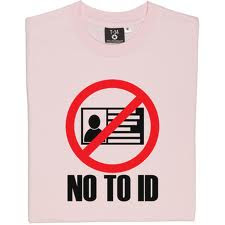




















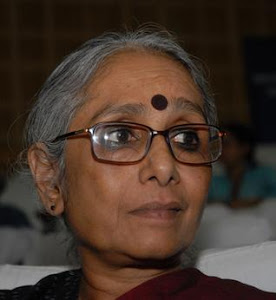

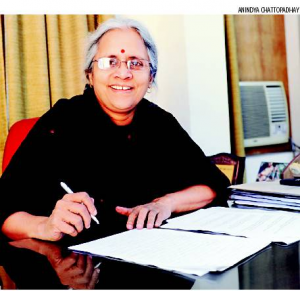

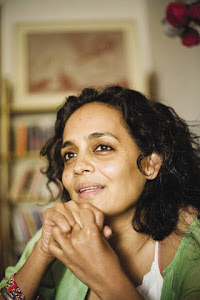













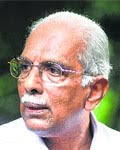
















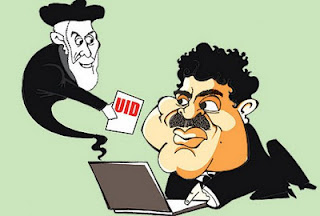
























Hi! Great work. I feel nice to be here reading your authentic work.
ReplyDeleteCustom Sticker
Ask Questions Get Answers
custom packaging boxes
Hmm… I interpret blogs on a analogous issue, however i never visited your blog. I added it to popular also i’ll be your faithful primer.
ReplyDeleteSpecial Education And Learning Disabilities
You have described it right, I agree with you in this matter.\
ReplyDeleteMarketing Agency | ERP
This comment has been removed by the author.
ReplyDelete